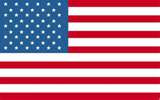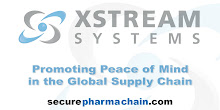
a) completely under reported
b) significantly on the rise
Just to put this into perspective, the following are the statistics from the World Health Organization on the Prevalence of Counterfeit Drugs in the West and the Developing World. These statistics represent WHO's 2006 estimates as to the percentage of counterfeit or adulterated drugs within that country or regions total drug supply chain.
- United States, less than 1%
- United Kingdom, less than 1%
- Europe, less than 1%, some estimate percentages as high as 10%
- Nigeria, 16%
- Kenya, 30%
- Lebanon, 35%
- Cambodia, 13%
- China, 8% on OTC medications
- India, 10-20%
- Indonesia, 25%
- Russia, 10%
- Former Soviet Republics, 20%
- Colombia, 5%
- Mexico, 10%
- Peru, 15-20%
- Venezuela, 25%
Realize that these numbers are all presumed to be very low and many of the percentages may have nearly doubled since 2006. Consider the tainted Heparin as a good example of the rise of counterfeit, adulterated or otherwise tainted drugs within the United States and other developed countries in 2008. Even the United States figure of less than 1% equals many billions of dollars in undetected counterfeit medications within our drug supply.
Most importantly realize that now, in the era of a Global Pharmaceutical Supply Chain that many drugs that are being imported into the United States and other developed countries now owe their source of raw materials, production and packaging to less developed countries like India, China and other countries whose pharmaceutical supply chain is riddled with counterfeit and adulterated medications.
Encourage your lawmakers and dispensers of medications to demand an authentication technology to double check the pharmaceuticals that your family consumes. Authentication of the pharmaceuticals is the only answer to properly knowing that the drugs you and your family are taking to maintain their health are not in fact harming them instead.
Current initiatives that are being debated in Washington and other regulatory agencies are almost exclusively centered on track and trace technologies that do not authenticate the drug. All the Heparin that has to date caused over 149 deaths in the United States all had a perfect pedigree and would have passed as authentic with track and trace technology.











